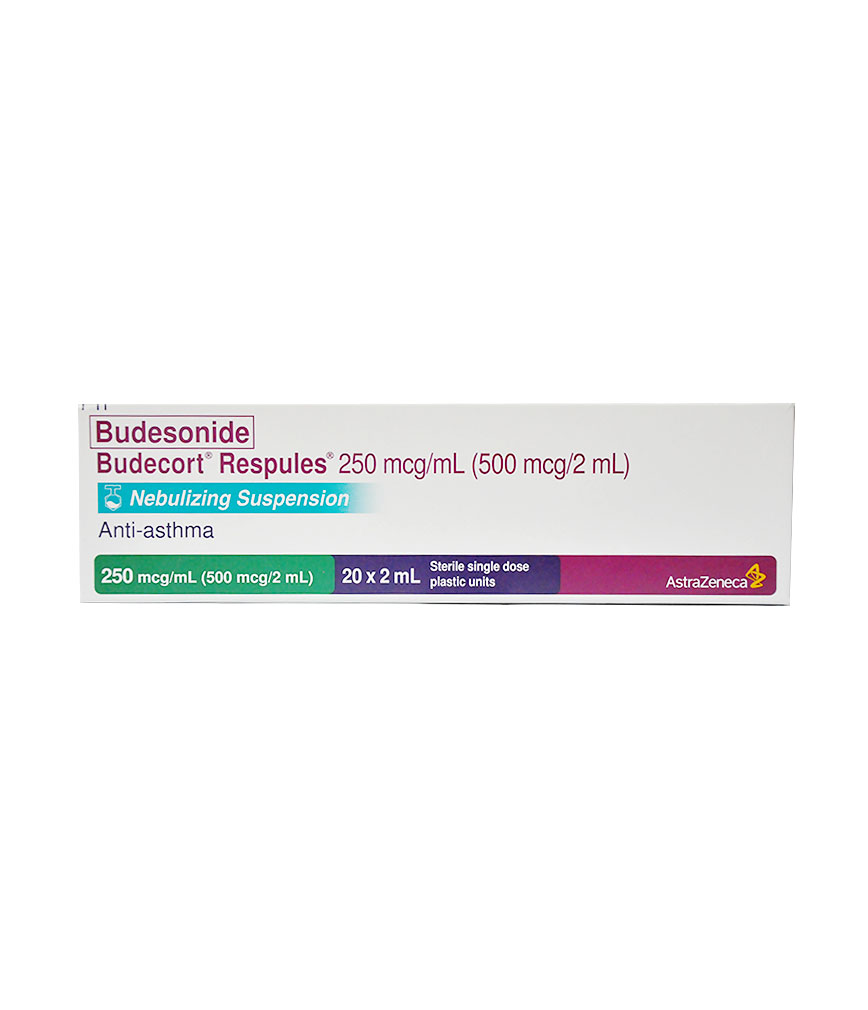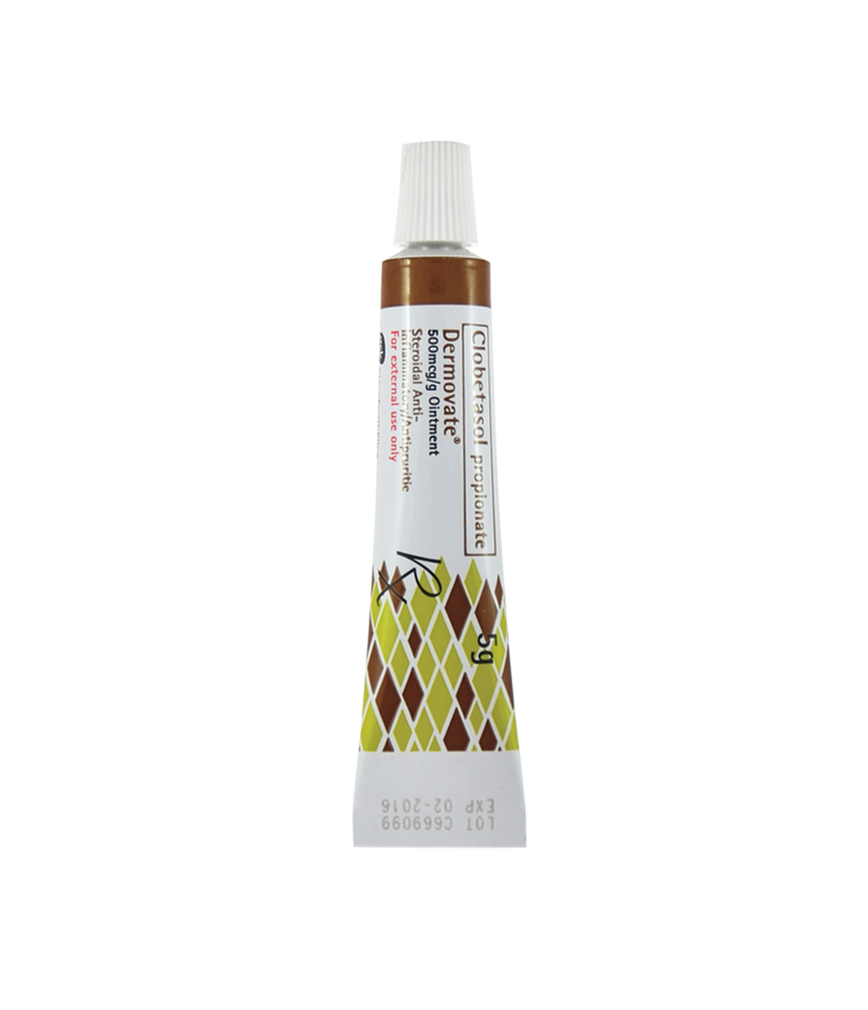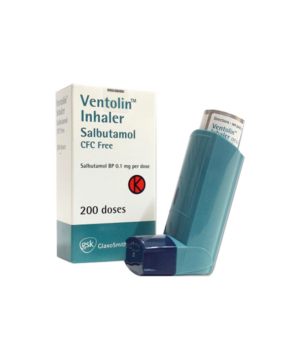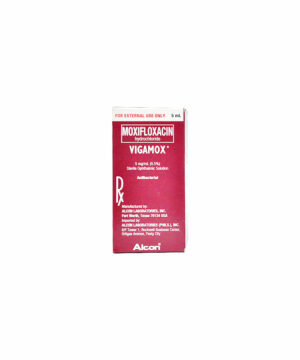Description
VYTORIN 10MG/10MG TABLET
Description :
Ezetimibe/Simvastatin (VYTORIN) is available for oral use as tablets containing: 10 mg of ezetimibe and 10 mg of simvastatin.
10 mg of ezetimibe and 20 mg of simvastatin.
10 mg of ezetimibe and 40 mg of simvastatin.
Indications / Uses :
Prevention of Cardiovascular Disease: Ezetimibe/Simvastatin (VYTORIN) is indicated to reduce the risk of cardiovascular events (cardiovascular death, nonfatal myocardial infarction, nonfatal stroke, hospitalization for unstable angina, or need for revascularization), in patients with coronary heart disease (CHD).
Prevention of Major Cardiovascular Events in Chronic Kidney Disease (CKD): Ezetimibe/Simvastatin (VYTORIN) is indicated to reduce the risk of major cardiovascular events (nonfatal myocardial infarction or cardiac death, stroke, or any revascularization procedure) in patients with chronic kidney disease.
Primary Hypercholesterolemia: Ezetimibe/Simvastatin (VYTORIN) is indicated as adjunctive therapy to diet for the reduction of elevated total cholesterol (total-C), low-density lipoprotein cholesterol (LDL-C), apolipoprotein B (Apo B), triglycerides (TG), and non-high-density lipoprotein cholesterol (non-HDL-C), and to increase high-density lipoprotein cholesterol (HDL-C) in adult and adolescent (10 to 17 years of age) patients with primary (heterozygous familial and non-familial) hypercholesterolemia or mixed hyperlipidemia.
Fenofibrate can be added to Ezetimibe/Simvastatin (VYTORIN) in adult patients with mixed hyperlipidemia who require further reduction in TG and non-HDL-C and increase in HDL-C.
Homozygous Familial Hypercholesterolemia (HoFH): Ezetimibe/Simvastatin (VYTORIN) is indicated for the reduction of elevated total-C and LDL-C levels in adult and adolescent (10 to 17 years of age) patients with HoFH. Patients may also receive adjunctive treatments (e.g., LDL apheresis).
Administration :
May be taken with or without food: Avoid excessive consumption (>1 L/day) of grapefruit juice.
Contraindications :
Hypersensitivity to the active substances or to any of the excipients. Active liver disease or unexplained persistent elevations of serum transaminases. Pregnancy and nursing (see Use in Pregnancy & Lactation as follows). When Ezetimibe/Simvastatin (VYTORIN) is to be administered with fenofibrate, please refer to the Package Insert for fenofibrate. Concomitant administration of potent CYP3A4 inhibitors (e.g. itraconazole, ketoconazole, posaconazole, voriconazole, HIV protease inhibitors, boceprevir, telaprevir, erythromycin, clarithromycin, telithromycin nefazodone, and drugs containing cobicistat) (see Interactions and Myopathy/Rhabdomyolysis under Precautions). Concomitant administration of gemfibrozil, cyclosporine, or danazol (see Interactions and Myopathy/Rhabdomyolysis under Precautions).
Special Precautions :
When Ezetimibe/Simvastatin (VYTORIN) is to be administered with fenofibrate, please refer to the Package Insert for fenofibrate.
Myopathy/Rhabdomyolysis: Simvastatin, like other inhibitors of HMG-CoA reductase, occasionally causes myopathy manifested as muscle pain, tenderness or weakness with creatine kinase (CK) above 10X the upper limit of normal (ULN). Myopathy sometimes takes the form of rhabdomyolysis with or without acute renal failure secondary to myoglobinuria, and rare fatalities have occurred. The risk of myopathy is increased by high levels of HMG-CoA reductase inhibitory activity in plasma. Predisposing factors for myopathy include advanced age (=65 years), female gender, uncontrolled hypothyroidism, and renal impairment.
As with other HMG-CoA reductase inhibitors, the risk of myopathy/rhabdomyolysis is dose related for simvastatin. In a clinical trial database in which 41,413 patients were treated with simvastatin, 24,747 (approximately 60%) of whom were enrolled in studies with a median follow-up of at least 4 years, the incidence of myopathy was approximately 0.03%, 0.08% and 0.61% at 20, 40 and 80 mg/day, respectively. In these trials, patients were carefully monitored and some interacting medicinal products were excluded.
In a clinical trial in which patients with a history of myocardial infarction were treated with simvastatin 80 mg/day (mean follow-up 6.7 years), the incidence of myopathy was approximately 1.0% compared with 0.02% for patients on 20 mg/day. Approximately half of these myopathy cases occurred during the first year of treatment. The incidence of myopathy during each subsequent year of treatment was approximately 0.1%.
The risk of myopathy is greater in patients on simvastatin 80 mg compared with other statin-based therapies with similar LDL-C-lowering efficacy. Therefore, the 10/80-mg dose of Ezetimibe/Simvastatin (VYTORIN) should only be used in patients at high risk for cardiovascular complications who have not achieved their treatment goals on lower doses and when the benefits are expected to outweigh the potential risks. In patients taking Ezetimibe/Simvastatin (VYTORIN) 10/80 mg for whom an interacting agent is needed, a lower dose of Ezetimibe/Simvastatin (VYTORIN) or an alternative statin-ezetimibe regimen with less potential for drug-drug interactions should be used (see Dosage & Administration and Contraindications).
All patients starting therapy with Ezetimibe/Simvastatin (VYTORIN), or whose dose of Ezetimibe/Simvastatin (VYTORIN) is being increased, should be advised of the risk of myopathy and told to report promptly any unexplained muscle pain, tenderness or weakness. Ezetimibe/Simvastatin (VYTORIN) therapy should be discontinued immediately if myopathy is diagnosed or suspected. The presence of these symptoms, and a CK level >10 times the upper limit of normal indicates myopathy. In most cases, when patients were promptly discontinued from simvastatin treatment, muscle symptoms and CK increases resolved (see Side Effects). Periodic CK determinations may be considered in patients starting therapy with Ezetimibe/Simvastatin (VYTORIN) or whose dose is being increased. Periodic CK determinations are recommended for patients titrating to the 10/80 mg dose. There is no assurance that such monitoring will prevent myopathy.
Many of the patients who have developed rhabdomyolysis on therapy with simvastatin have had complicated medical histories, including renal insufficiency usually as a consequence of long-standing diabetes mellitus. Such patients taking Ezetimibe/Simvastatin (VYTORIN) merit closer monitoring. Therapy with Ezetimibe/Simvastatin (VYTORIN) should be temporarily stopped a few days prior to elective major surgery and when any major medical or surgical condition supervenes.
In the IMProved Reduction of Outcomes: Vytorin Efficacy International Trial (IMPROVE-IT), 18,144 patients with CHD were randomized to receive Ezetimibe/Simvastatin (VYTORIN) 10/40 mg daily (n=9067) or simvastatin 40 mg daily (n=9077). During a median follow-up of 6.0 years, the incidence of myopathy was 0.2% for Ezetimibe/Simvastatin (VYTORIN) and 0.1% for simvastatin, where myopathy was defined as unexplained muscle weakness or pain with a serum CK =10 times ULN or two consecutive observations of CK =5 and <10 times ULN. The incidence of rhabdomyolysis was 0.1% for Ezetimibe/Simvastatin (VYTORIN) and 0.2% for simvastatin, where rhabdomyolysis was defined as unexplained muscle weakness or pain with a serum CK =10 times ULN with evidence of renal injury or CK =10,000 mU/mL. (See Side Effects.)
In a clinical trial in which over 9000 patients with chronic kidney disease were randomized to receive Ezetimibe/Simvastatin (VYTORIN) 10/20 mg daily (n=4650) or placebo (n=4620). (median follow-up 4.9 years), the incidence of myopathy/rhabdomyolysis was 0.2% for Ezetimibe/Simvastatin (VYTORIN) and 0.1% for placebo. (See Side Effects.)
In a clinical trial in which patients at high risk of cardiovascular disease were treated with simvastatin 40 mg/day (median follow-up 3.9 years), the incidence of myopathy was approximately 0.05% for non-Chinese patients (n=7367) compared with 0.24% for Chinese patients (n=5468). While the only Asian population assessed in this clinical trial was Chinese, caution should be used when prescribing Ezetimibe/Simvastatin (VYTORIN) to Asian patients and the lowest dose necessary should be employed.
Drug Interactions: Because Ezetimibe/Simvastatin (VYTORIN) contains simvastatin, the risk of myopathy/rhabdomyolysis is increased by concomitant use of Ezetimibe/Simvastatin (VYTORIN) with the following drugs:
Contraindicated Drugs: Potent inhibitors of CYP3A4: Concomitant use with medicines labeled as having a potent inhibitory effect on CYP3A4 at therapeutic doses (e.g., itraconazole, ketoconazole, posaconazole, voriconazole, erythromycin, clarithromycin, telithromycin, HIV protease inhibitors, boceprevir, telaprevir, nefazodone, or drugs containing cobicistat) is contraindicated. If short-term treatment with potent CYP3A4 inhibitors is unavoidable, therapy with Ezetimibe/Simvastatin (VYTORIN) should be suspended during the course of treatment. (See Contraindications and Interactions).
Gemfibrozil, cyclosporine, or danazol: Concomitant use of these drugs with Ezetimibe/Simvastatin (VYTORIN) is contraindicated (see Contraindications and Interactions).
Other Drugs: Fusidic acid: Patients on fusidic acid treated concomitantly with simvastatin may have an increased risk of myopathy/rhabdomyolysis (see Interactions). Co-administration with fusidic acid is not recommended. In patients where the use of systemic fusidic acid is considered essential, Ezetimibe/Simvastatin (VYTORIN) should be discontinued throughout the duration of fusidic acid treatment. In exceptional circumstances, where prolonged systemic fusidic acid is needed, e.g. for the treatment of severe infections, the need for co-administration of Ezetimibe/Simvastatin (VYTORIN) and fusidic acid should only be considered on a case-by-case basis under close medical supervision.
Amiodarone: In a clinical trial, myopathy was reported in 6% of patients receiving simvastatin 80 mg and amiodarone. The dose of Ezetimibe/Simvastatin (VYTORIN) should not exceed 10/20 mg daily in patients receiving concomitant medication with amiodarone. (See Interactions).
Calcium Channel Blockers: Verapamil or Diltiazem: Patients on diltiazem treated concomitantly with simvastatin 80 mg had an increased risk of myopathy. The dose of Ezetimibe/Simvastatin (VYTORIN) should not exceed 10/20 mg daily in patients receiving concomitant medication with verapamil or diltiazem. (See Interactions).
Amlodipine: In a clinical trial, patients on amlodipine treated concomitantly with simvastatin 80 mg had a slightly increased risk of myopathy (see Interactions). The dose of Ezetimibe/Simvastatin (VYTORIN) should not exceed 10/40 mg daily in patients receiving concomitant medication with amlodipine.
Lomitapide: The dose of Ezetimibe/Simvastatin (VYTORIN) should not exceed 10/40 mg daily in patients with HoFH receiving concomitant medication with lomitapide (see Interactions).
Moderate Inhibitors of CYP3A4: Patients taking other medicines labeled as having a moderate inhibitory effect on CYP3A4 concomitantly with Ezetimibe/Simvastatin (VYTORIN), particularly higher Ezetimibe/Simvastatin (VYTORIN) doses, may have an increased risk of myopathy. When coadministering Ezetimibe/Simvastatin (VYTORIN) with a moderate inhibitor of CYP3A4, a dose adjustment of Ezetimibe/Simvastatin (VYTORIN) may be necessary.
Fenofibrate: In a study in which Ezetimibe/Simvastatin (VYTORIN) 10/20 mg/day and fenofibrate 160 mg/day were coadministered in 183 patients for up to 12 weeks, there were no reports of myopathy. Doses above Ezetimibe/Simvastatin (VYTORIN) 10/20 mg/day and fenofibrate have not been studied. Caution should be used when prescribing Ezetimibe/Simvastatin (VYTORIN) and fenofibrate, as fenofibrate can cause myopathy when given alone. In another 12-week study, in which 411 patients received simvastatin 20 mg/day and fenofibrate 160 mg/day, coadministration was also well tolerated. If cholelithiasis is suspected in a patient receiving Ezetimibe/Simvastatin (VYTORIN) and fenofibrate, gallbladder studies are indicated and alternative lipid-lowering therapy should be considered (see Side Effects and the Package Insert for fenofibrate).
Other Fibrates: The safety and effectiveness of Ezetimibe/Simvastatin (VYTORIN) administered with fibrates, except fenofibrate, have not been studied. Therefore, the concomitant use of Ezetimibe/Simvastatin (VYTORIN) and fibrates, except fenofibrate, should be avoided. Concomitant use of gemfibrozil is contraindicated (see Contraindications).
Niacin (=1 g/day): Cases of myopathy/rhabdomyolysis have been observed with simvastatin coadministered with lipid-modifying doses (=1 g/day) of niacin. In a clinical trial (median follow-up 3.9 years) involving patients at high risk of cardiovascular disease and with well-controlled LDL-C levels on simvastatin 40 mg/day with or without ezetimibe 10 mg, there was no incremental benefit on cardiovascular outcomes with the addition of lipid-modifying doses (=1 g/day) of niacin. Therefore, the benefit of the combined use of simvastatin with niacin should be carefully weighed against the potential risks of the combination. In addition, in this trial, the incidence of myopathy was approximately 0.24% for Chinese patients on simvastatin 40 mg or ezetimibe/simvastatin 10/40 mg compared with 1.24% for Chinese patients on simvastatin 40 mg or ezetimibe/simvastatin 10/40 mg coadministered with extended-release niacin/laropiprant 2 g/ 40 mg. While the only Asian population assessed in this clinical trial was Chinese, because the incidence of myopathy is higher in Chinese than in non-Chinese patients, coadministration of Ezetimibe/Simvastatin (VYTORIN) with lipid-modifying doses (=1 g/day) of niacin is not recommended in Asian patients. (See Interactions).
Anticoagulants: If Ezetimibe/Simvastatin (VYTORIN) is added to warfarin, another coumarin anticoagulant, or fluindione, the International Normalized Ratio (INR) should be appropriately monitored (see Interactions).
Liver Enzymes: In controlled coadministration trials in patients receiving ezetimibe with simvastatin, consecutive transaminase elevations (=3 X ULN) have been observed. (See Side Effects.)
In IMPROVE-IT, 18,144 patients with CHD were randomized to receive Ezetimibe/Simvastatin (VYTORIN) 10/40 mg daily (n=9067) or simvastatin 40 mg daily (n=9077). During a median follow-up of 6.0 years, the incidence of consecutive elevations of transaminases (>3 X ULN) was 2.5% for Ezetimibe/Simvastatin (VYTORIN) and 2.3% for simvastatin. (See Side Effects.)
In a controlled clinical study in which over 9000 patients with chronic kidney disease were randomized to receive Ezetimibe/Simvastatin (VYTORIN) 10/20 mg daily (n=4650), or placebo (n=4620) (median follow-up period of 4.9 years), the incidence of consecutive elevations of transaminases (>3 X ULN) was 0.7% for Ezetimibe/Simvastatin (VYTORIN) and 0.6% for placebo. (See Side Effects).
It is recommended that LFTs be performed before treatment with Ezetimibe/Simvastatin (VYTORIN) begins and thereafter when clinically indicated. Patients titrated to the 10/80-mg dose should receive an additional test prior to titration, 3 months after titration to the 10/80-mg dose, and periodically thereafter (e.g., semiannually) for the first year of treatment. Special attention should be paid to patients who develop elevated serum transaminase levels, and in these patients, measurements should be repeated promptly and then performed more frequently. If the transaminase levels show evidence of progression, particularly if they rise to 3 X ULN and are persistent, the drug should be discontinued. Note that ALT may emanate from muscle, therefore ALT rising with CK may indicate myopathy (see Myopathy/Rhabdomyolysis under Precautions).
There have been rare postmarketing reports of fatal and non-fatal hepatic failure in patients taking statins, including simvastatin. If serious liver injury with clinical symptoms and/or hyperbilirubinemia or jaundice occurs during treatment with Ezetimibe/Simvastatin (VYTORIN), promptly interrupt therapy. If an alternate etiology is not found do not restart Ezetimibe/Simvastatin (VYTORIN).
Ezetimibe/Simvastatin (VYTORIN) should be used with caution in patients who consume substantial quantities of alcohol and/or have a past history of liver disease. Active liver diseases or unexplained persistent transaminase elevations are contraindications to the use of Ezetimibe/Simvastatin (VYTORIN).
Hepatic Insufficiency: Due to the unknown effects of the increased exposure to ezetimibe in patients with moderate or severe hepatic insufficiency, Ezetimibe/Simvastatin (VYTORIN) is not recommended in these patients.
Use in Children: Safety and effectiveness of Ezetimibe/Simvastatin (VYTORIN) in patients 10 to 17 years of age with heterozygous familial hypercholesterolemia have been evaluated in a controlled clinical trial in adolescent boys and in girls who were at least one year post-menarche. Adolescent patients treated with Ezetimibe/Simvastatin (VYTORIN) had an adverse experience profile similar to that of adult patients treated with Ezetimibe/Simvastatin (VYTORIN). Doses greater than 10/40 mg/day have not been studied in this population. In this controlled study, there was no detectable effect on growth or sexual maturation in the adolescent boys or girls, or any effect on menstrual cycle length in girls. (See Dosage & Administration and Side Effects.) Ezetimibe/Simvastatin (VYTORIN) has not been studied in patients younger than 10 years of age or in pre-menarchal girls.
Use in Elderly: Because advanced age (=65 years) is a predisposing factor for myopathy, Ezetimibe/Simvastatin (VYTORIN) should be prescribed with caution in the elderly. In a clinical trial of patients treated with simvastatin 80 mg/day, patients =65 years of age had an increased risk of myopathy compared to patients <65 years of age.














Reviews
There are no reviews yet.